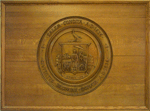Salem Woods: Difference between revisions
mNo edit summary |
mNo edit summary |
||
| Line 1: | Line 1: | ||
For centuries, this part of Salem was home to Native American Indians and | For centuries, this part of Salem was home to Native American Indians and | ||
In colonial times, this area was known as Great Pastures and was held as common lands for the pasturage of livestock. | In colonial times, this area was known as Great Pastures and was held as common lands for the pasturage of livestock. | ||
Salem Woods (also known as Highland Park) today comprises 160 acres of diverse uplands, freshwater marshes, open fields, and running water. In combination with the Forest River Conservation Area and the 70-acres Thompson's Meadow march, this complex ecosystem is host and home to more than 150 species of birds, dozens of mammals, reptiles and amphibians. There are many varieties of flowers, trees and plants here as well. The Forest and South rivers flow out of his woods and wetlands into the Salem Sound, | |||
==See Also== | ==See Also== | ||
Vertical File in Salem Collection - Salem Woods | Vertical File in Salem Collection - Salem Woods | ||
[ | |||
[[Category:Browse Index]] | [[Category:Browse Index]] | ||
[[Category:Places]] | [[Category:Places]] | ||
Revision as of 12:44, 12 December 2008
For centuries, this part of Salem was home to Native American Indians and In colonial times, this area was known as Great Pastures and was held as common lands for the pasturage of livestock. Salem Woods (also known as Highland Park) today comprises 160 acres of diverse uplands, freshwater marshes, open fields, and running water. In combination with the Forest River Conservation Area and the 70-acres Thompson's Meadow march, this complex ecosystem is host and home to more than 150 species of birds, dozens of mammals, reptiles and amphibians. There are many varieties of flowers, trees and plants here as well. The Forest and South rivers flow out of his woods and wetlands into the Salem Sound,
See Also
Vertical File in Salem Collection - Salem Woods
[
